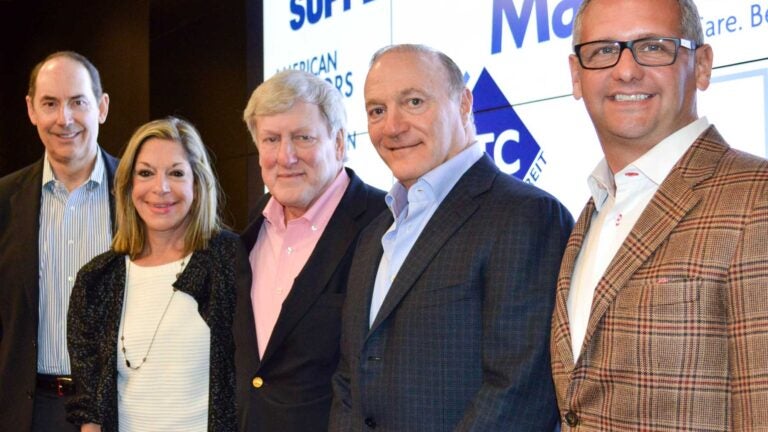
Loren Shook of Silverado Senior Living, Patricia Will of Belmont Village, Bob Kramer of the National Investment Center for Seniors and Housing Care, Andy Kohlberg of Kisco Senior Living and Jack Callison of Enlivant Senior Living, from left (Photo/Orli Belman)
How boomers can transform senior living
Experts forecast key changes ahead during executive course at USC
This is not your grandmother’s retirement home.
That was the message delivered to nearly 60 senior housing professionals at the third annual Senior Living Executive Course led by the USC Leonard Davis School of Gerontology and the USC Marshall School of Business.
The three-day professional development course in February provided expert insights on the latest issues related to the business, law, science, education and future of aging, with an emphasis on how to meet the emerging housing, health and well-being needs of close to 80 million baby boomers.
“The senior living sector is expanding rapidly to meet the current and future needs of an aging nation,” said USC Davis Professor and Dean Emeritus Edward L. Schneider. “The USC Leonard Davis School and the USC Marshall School are addressing this challenge by organizing courses to assist the leadership of this industry.”
Personalized aging
USC Davis Dean Pinchas Cohen spoke about the potential of personalized aging — empowering people to use their genetic data to promote their own health and wellness. USC Marshall Professor Greg Patton provided the executives with principles to enhance communication, interpersonal and leadership skills. Cynthia Hutchins MA ’13, director of financial gerontology at Bank of America Merrill Lynch, discussed the financial implications of aging.
A pressing topic was how residential communities must meet the unique needs of the aging baby boom generation, which include an increasing demand for exercise classes, specialty food bistros and multi-family housing options. This is part of a larger trend that considers how the physical design of a space can enhance residents’ safety and well-being, especially for those with Alzheimer’s disease or other memory impairments.
You’ve got to take the nursing home out of the nursing home.
Loren Shook
“You’ve got to take the nursing home out of the nursing home,” said Loren Shook, founder and CEO of Silverado Senior Living and a member of the USC Davis Board of Councilors. He advised attendees to hire good architects, remove nursing stations and add wellness rooms.
“We are in a period of disruption,” said Bob Kramer, CEO of the National Investment Center for Seniors and Housing Care, who noted that occupancy for traditional skilled nursing facilities are declining while other senior living options, including assisted living communities — which aim to meet individuals’ evolving care needs with limited disruption to their living environments — are near full capacity, with demand only expected to grow.
Panelists predicted a rise in technology-enabled care, such as telemedicine consultations to increase access to specialists and app-enabled businesses that deliver health services to people in their homes. They also acknowledged challenges regarding how to train and maintain the needed workforce required to help provide care, cleaning and other essential services for an aging population that is growing.
While looking ahead to an era of change, the experts reinforced the message that working in senior living has never been about business as usual.
“As leaders, we come by this profession because it is personal,” said Patricia Will, founder and CEO of Belmont Village and a member of the USC Davis Board of Councilors. “We all share a passion for how to make aging better.”
